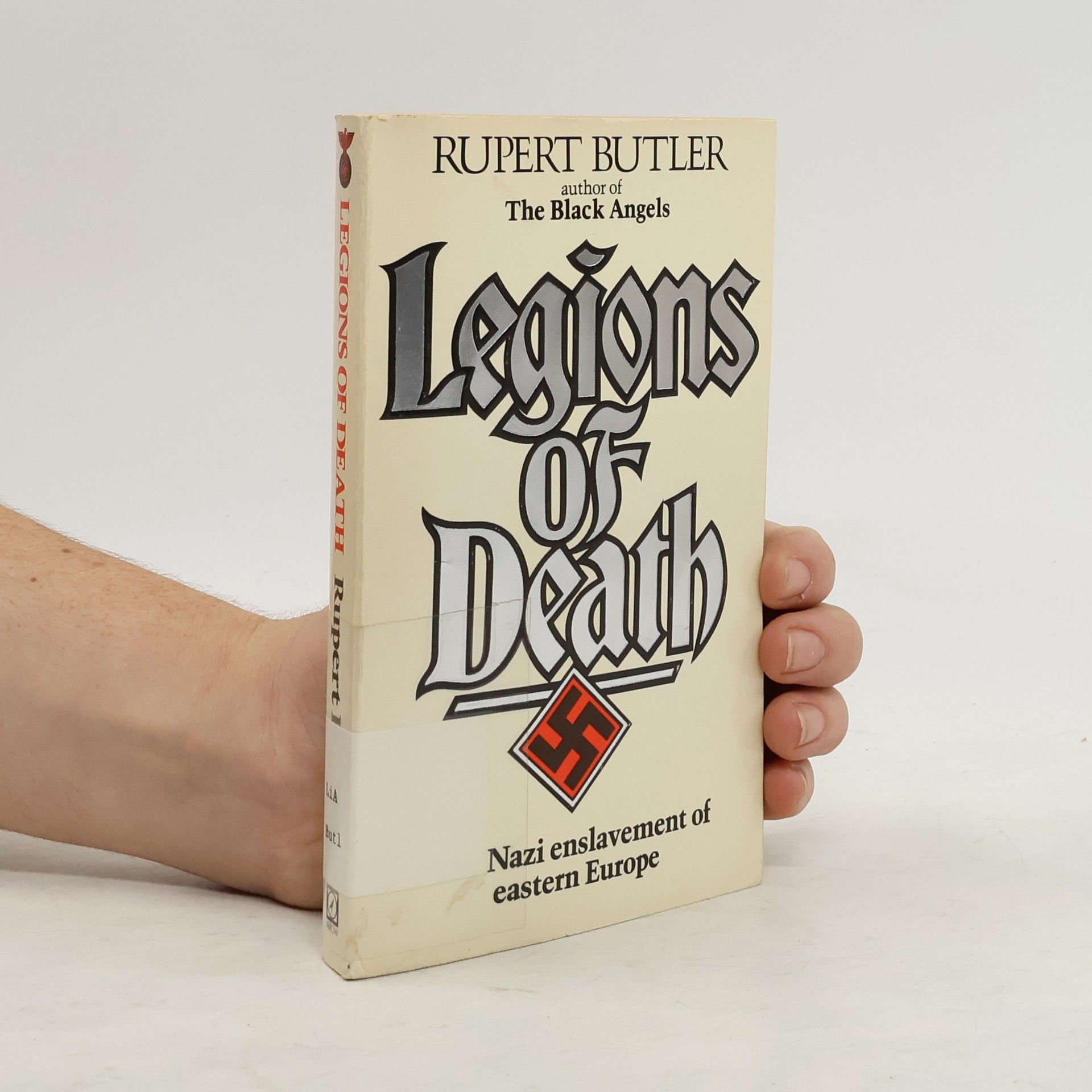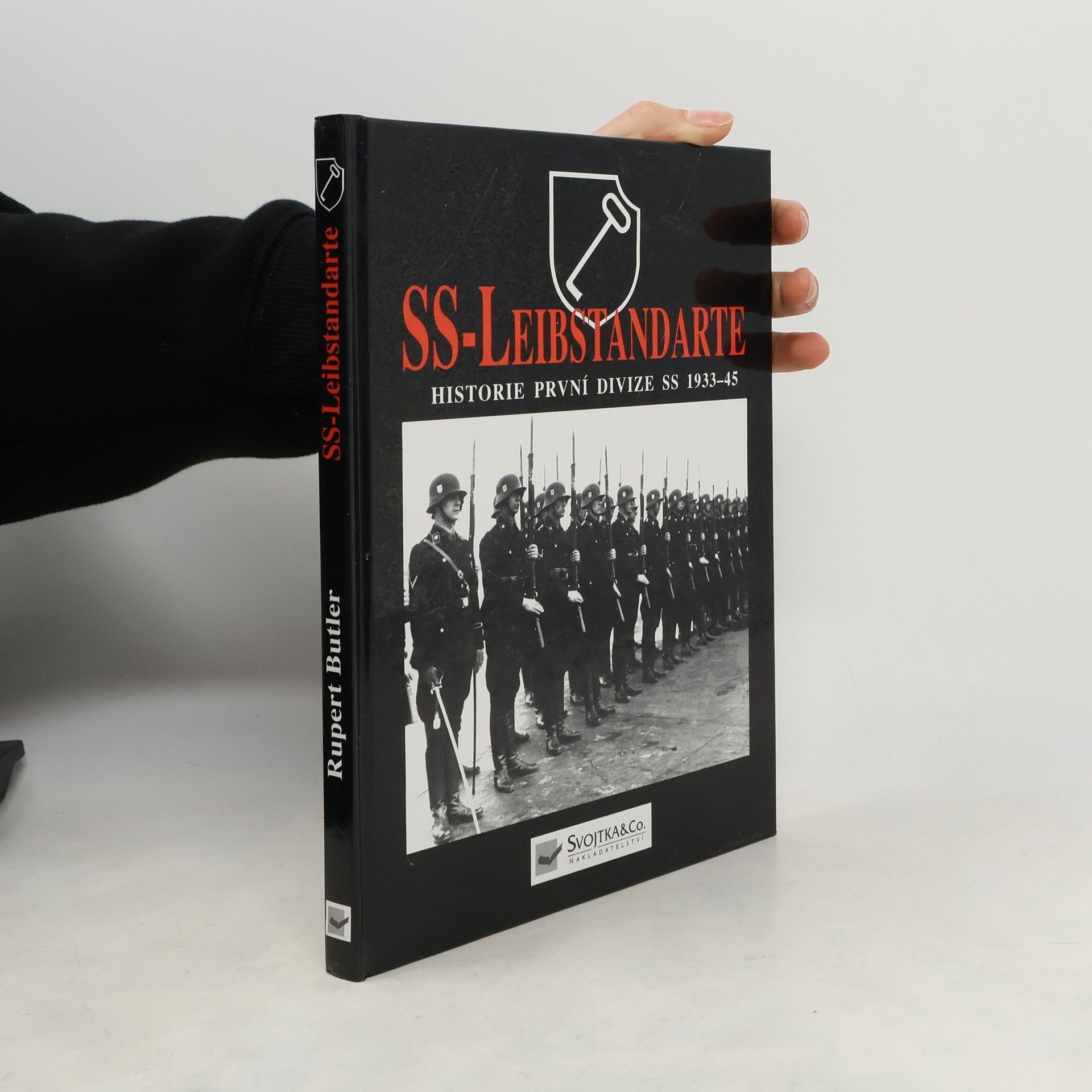Podrobný přehled mužů, vybavení a bojů divize Hitlerjugend - jednotky Waffen-SS, kterou tvořili mladí chlapci z organizace Hitlerjugend a prošedivlí veteráni, převelení z divize Leibstandarte. Kniha obsahuje vzácné fotografie divize a jejích klíčových postav od jejího vzniku až do konce války, včetně hrdinského usílí, které vyvinula v bitvách v Normandii, pasti u Falaise, při ofenzivě v Ardenách a bojích v Maďarsku. Historicky věrohodný text je doplněn speciálními mapami, které znázorňují tažení a bitvy, jichž se divize Hitlerjugend účastnila.
Rupert Butler Book order







- 2016
- 2010
Nástroje stalinského teroru : ČEKA, OGPU, NKVD, KGB: Od roku 1917 do roku 1991
- 192 pages
- 7 hours of reading
Kniha NÁSTROJE STALINSKÉHO TERORU odhaluje živou a čtivou formou dějiny všemocné tajné policie v Sovětském svazu od roku 1917 do devadesátých let 20. století. Nechvalně proslulý KGB z dob studené války byl nástupcem řady podobných smrtících služeb státní bezpečnosti, působících od samého počátku ruské revoluce: Čeky, OGPU, NKVD a MVD. Kniha Nástroje stalinského teroru zasazuje Stalinovy brutální metody do širšího dějinného rámce, když začíná popisem drsných státněbezpečnostních opatření samovládných carů, počínaje Ivanem Hrozným.
- 2008
Gestapo. Dějiny Hitlerovy tajné policie 1933-45
- 192 pages
- 7 hours of reading
Kniha seznamuje s podrobnostmi dějin nacistické státní policie, její organizační strukturou, jejími vedoucími představiteli, krutými metodami a zánikem v troskách poražené třetí říše. Svědectví očitých svědků přibližují postupy a prostředky používané gestapem, udavačství, mučení a deportace do koncentračních táborů.
- 2006
Hitlerovi šakali
- 291 pages
- 11 hours of reading
Publikace o postavení a roli evropských států, které za 2.světové války spolupracovaly s německou třetí říší - Itálie, Rumunska, Maďarska, Slovenska a dalších. Již před 2. světovou válkou, na jaře r. 1939, uzavřelo Německo s velikou slávou tzv. Ocelový pakt s Mussoliniho Itálií. Za války se na stranu třetí říše postupně a pod větším či menším nátlakem přidávaly další země: Slovensko Jozefa Tisa, Maďarsko Miklose Horthyho, Rumunsko diktátora Iona Antonesca, Bulharsko. Velmi složitá situace panovala v Němci a Italy podporovaném separatistickém Chorvatsku Ante Pavelice. Vojensky podpořilo německé válečné úsilí i oficiálně neutrální Španělsko, vcelku přirozeným německým spojencem se stává po finsko-ruské tzv. Zimní válce v r. 1939 i Finsko. Autor zaznamenává události 2. světové války a vztahy Berlín - satelity chronologicky, nikoli podle jednotlivých států. S nepříznivým vývojem na válečných frontách se samozřejmě mění i jejich postavení a ochota přisluhovat třetí říši. Autor sleduje osudy nejvýznamnějších pohlavárů vybraných zemí i po skončení války. Fotografie, seznam literatury.
- 2005
V této publikaci najdete podrobný přehled mužů, vybavení, organizace a bojů divize Hitlerjugend - jednotky Waffen-SS, kterou tvořili mladí chlapci z organizace Hitlerjugend i prošedivělí veteráni, převelení z divize Leibstandarte SS. Obsahuje dobové fotografie divize a jejích klíčových postav od jejího vzniku až do konce války, zaznamenává odhodlanost, kterou její příslušníci vyvinuli v bitvách v Normandii, v pasti u Falaise, při ofenzivě v Ardenách a v bojích v Maďarsku. Historicky věrohodný text je doplněn speciálními mapami, které znázorňují tažení a bitvy, jichž se divize Hitlerjugend účastnila.
- 2004
Das vorliegende Werk zeichnet ein genaues Bild von Heinrich Himmlers Gestapo, deren 20.000 Mitarbeiter für die innere Sicherheit im Reich verantwortlich waren. Unter ihrer Schirmherrschaft wurden im besetzten Europa hunderttausende Zivilisten, Widerstandskämpfer und Spione brutal verfolgt, gefoltert und ermordet. Eine noch viel größere Zahl wurde in Konzentrationslager deportiert, wo sie fast immer der Tod erwartete. Die Gestapo mit Hauptquartier in der Prinz-Albrecht-Straße 8, eine der gefürchtetsten Adressen im Reich, entwickelte sich zu einem wesentlichen Element des NS-Regimes. Basierend auf Gestapo-Archiven und Augenzeugenberichten werden die Entwicklung der Gestapo, zentrale Figuren wie Reinhard Heydrich und Heinrich Müller sowie ihre brutalen Methoden zur Aufrechterhaltung der inneren Sicherheit beleuchtet, darunter auch die verschiedenen fehlgeschlagenen Attentatsversuche auf Hitler. Das vorliegende Werk ist eine anschauliche und fundierte Darstellung dieses berüchtigten und mysteriösen Machtapparats, der in ganz Europa hunderttausende Menschen terrorisierte. Mit 120 Schwarzweißfotos von bedeutenden Charakteren, Schlüsselereignissen und Opfern der zwölfjährigen Schreckensherrschaft der Gestapo.
- 2003
SS-Wiking. historie páté divize. 1941-45
- 192 pages
- 7 hours of reading
Podtitul: Historie páté divize-SS Wiking 1941-45 Vznik a vývoj, výzbroj, přehled tažení a velitelů 5.divize Waffen-SS Wiking během 2.světové války. Z mnoha různých důvodů dobrovolně vstupovaly k Waffen-SS desetitisíce mladých mužů z podrobených zemí. V nechvalně proslulé 5. divizi SS Wiking sloužili vedle Němců Vlámové, Holanďané, Dánové, Norové a Finové, později i Estonci. Tito vojáci se měli stát novou elitou ve svých zemích, měli být nositeli myšlenky jednoty germánského světa. Divize Wiking, od října 1943 tanková, bojovala již od počátku operace Barbarossa výhradně na východní frontě, prošla těžkými boji na jihu Ruska, na Kavkaze, po obklíčení mezi Korsunem a Čerkassy na počátku r. 1944 byla téměř zničena. Na sklonku války se marně pokoušela zachránit obránce obklíčené Budapešti. Příslušníkem zdravotnického sboru divize Wiking byl v letech 1942 -1943 i Josef Mengele... Fotografie, mapky, dodatky, seznam literatury, rejstřík.
- 2002
SS - Leibstandarte. Historie první z divizí SS 1933-1945
- 192 pages
- 7 hours of reading
Podrobná zpráva o mužstvu, výzbroji, organizaci a bojích divize Leibstandarte Adolf Hitler - součástí Waffen-SS, která vznikla z osobní stráže Adolfa Hitlera. Obsahuje unikátní fotografie divize i jejích klíčových postav od založení jednotky až po první bojové nasazení v Polsku a následující účast v bojích v Nozizemsku, ve Francii, v Belgii, v Maďarsku, v Československu a v Sovětském svazu. Obsažný text je doprovázen odborně zpracovanými mapami válečných tažení a bitev, kterých se Leibstandarte zůčastnila, například bitvy u Kurska, bitvy v Ardenách, bojů v Normandii, v Čerkasku a mnohých dalších.
- 2001
SS-Leibstandarte
- 176 pages
- 7 hours of reading
"SS-Leibstandarte also provides a full combat record of the division, which fought on both fronts during World War II. The book outlines the unit's involvement in the fall of France, and its service on the Eastern Front, from the invasion of Russia, the battle of Kharkov, and the relief of the Cherkassy pocket. There follow the desperate attempts to throw the Allies out of Normandy after D-Day, the atrocities committed during the Battle of the Bulge in the Ardennes, and the final, fruitless attempts to relieve Budapest and save Vienna from the Red Army. Illustrated with rare photographs, and with an authoritative text, SS-Leibstandarte is a definitive history of one of Germany's top fighting units of World War II."--BOOK JACKET.
- 1999
Dějiny gestapa slovem a obrazem
- 240 pages
- 9 hours of reading
Dějiny Gestapa slovem a obrazem podávají čtivý, podrobný a v mnoha směrech objevný obraz dvanáctiletého řádění gestapa po celé Evropě, ve vlastním národě - dokonce ve vlastních řadách - i v obsazených zemích.







